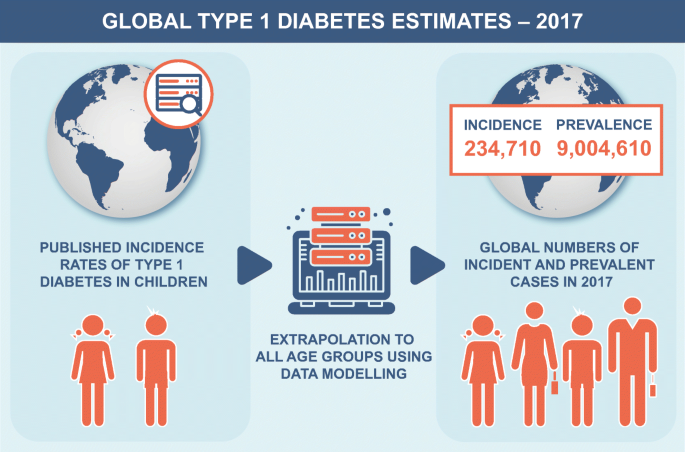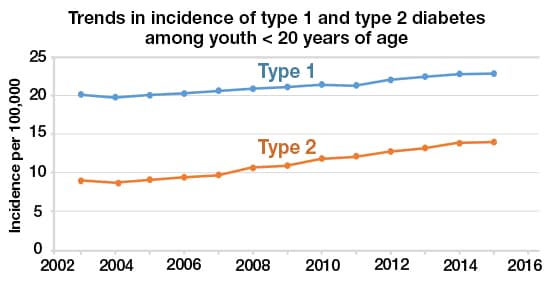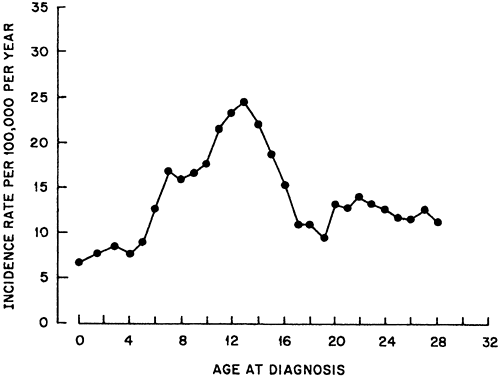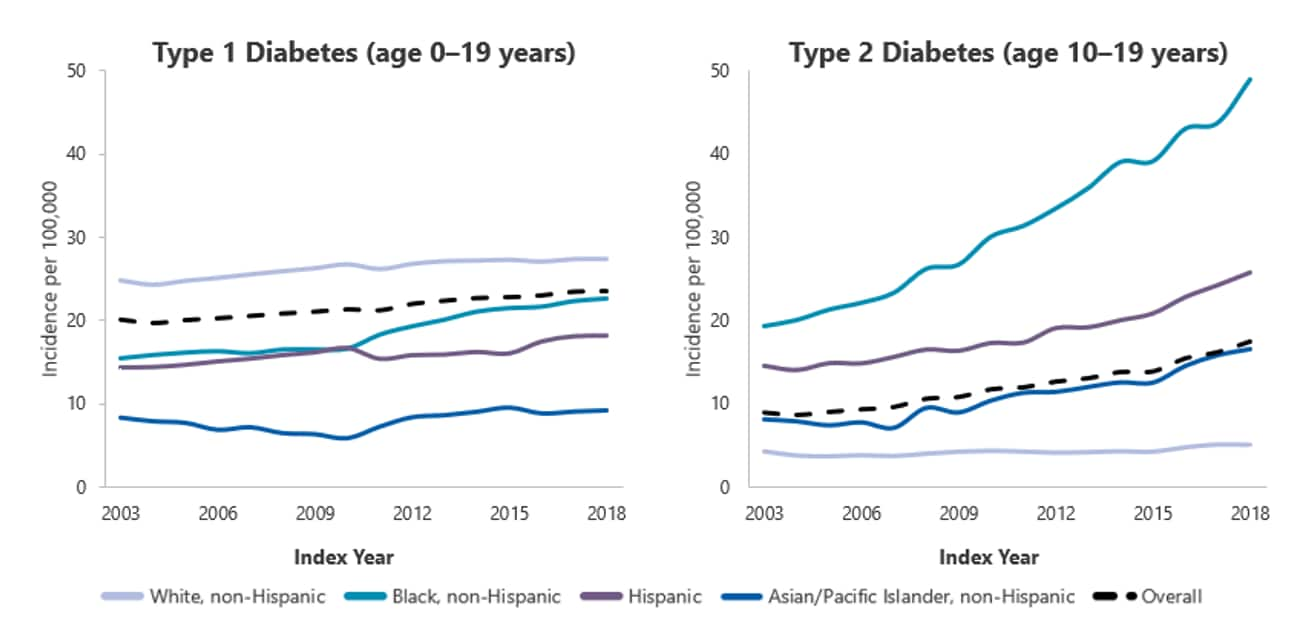
Incidence rates for type 1 diabetes by age at diagnosis and sex, United... | Download Scientific Diagram

Global incidence, prevalence, and mortality of type 1 diabetes in 2021 with projection to 2040: a modelling study - The Lancet Diabetes & Endocrinology

Frequency and phenotype of type 1 diabetes in the first six decades of life: a cross-sectional, genetically stratified survival analysis from UK Biobank - The Lancet Diabetes & Endocrinology

The number of adults with incident type 1 diabetes phenotype in Iceland is half the number in children – A population based study - ScienceDirect
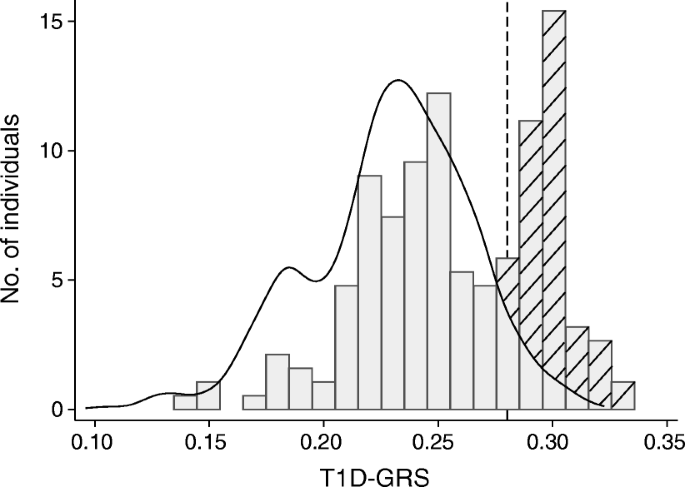
Type 1 diabetes can present before the age of 6 months and is characterised by autoimmunity and rapid loss of beta cells | SpringerLink

P111 - Age-, period- and cohort modelling of type 1 diabetes incidence in Europe among children age 0-15 years

Predicted percentage of new type 1 diabetes mellitus cases by age group... | Download Scientific Diagram

Fluctuations in the incidence of type 1 diabetes in the United States from 2001 to 2015: a longitudinal study | BMC Medicine | Full Text
The Prevalence and Incidence of Diabetes in Germany: An Analysis of Statutory Health Insurance Data on 65 Million Individuals From the Years 2009 and 2010 (18.03.2016)
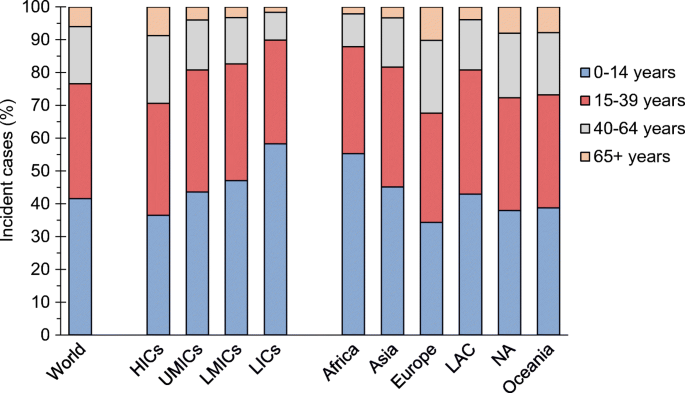
Type 1 diabetes in 2017: global estimates of incident and prevalent cases in children and adults | SpringerLink

FIGURE 11.1, Incidence of Type 1 Diabetes Per 100,000 Per Year in Children Age 0–14 Years, 1950–2003 - Diabetes in America - NCBI Bookshelf

Time trends in mortality in patients with type 1 diabetes: nationwide population based cohort study | The BMJ

The trends and the risk of type 1 diabetes over the past 40 years: an analysis by birth cohorts and by parental migration background in Sweden | BMJ Open

Frequency and phenotype of type 1 diabetes in the first six decades of life: a cross-sectional, genetically stratified survival analysis from UK Biobank - The Lancet Diabetes & Endocrinology

25-year study shows that incidence of type 1 diabetes is increasing by more than 3% per year in Europe – Diabetologia
Incidence trends of type 1 diabetes before and after the reunification in children up to 14 years of age in Saxony, Eastern Germany | PLOS ONE
